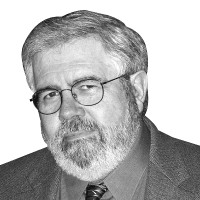Trump’s Tax Returns Raise Questions About Campaign Promise
BY NICK REYNOLDS
NEWSWEEK
DECEMBER 30, 2022
Donald Trump made a lot of claims about his taxes on the campaign trail. On a debate stage with Joe Biden, he claimed to have paid millions of dollars in taxes in recent years, and that a reported $750 tax bill he'd reported against millions of dollars in income that was subsequently scrutinized by the media was merely a "filing fee."
He also claimed that a Chinese bank account he'd maintained for business purposes had been closed before his run for the presidency, and that, as he and his press secretary, Sean Spicer, said in 2017, he would donate every cent of what was left of his taxpayer-funded $400,000 per year salary to charity.
The release of the former president's tax returns Friday show that Trump kept open his foreign bank accounts—including in China—throughout his presidency.
And he reported $0 in charitable giving on his 2020 tax return, according to various analysts, even after tweeting a photo of a check showing his payout of $100,000 to the National Park Service in August, about one month after a Washington Post story confirmed that he failed to donate a portion of his salary like he promised.
Though his 2018 and 2019 returns showed charitable contributions of more than $500,000, and an additional $1.9 million to charity in 2017, a report on Trump's taxes noted that he provided little documentation to support his claims.
There were other issues. On a debate stage before Fox News' Chris Wallace, Trump said he paid "millions of dollars" in taxes for 2016 and 2017, when he actually paid far less, reviving highly scrutinized claims that he prepaid those millions of dollars in taxes.
Tax returns throughout his presidency show that Trump reported large losses he carried forward to all but eliminate his tax burden, including a $105 million loss in 2015 and a $73 million loss in 2016. Four years later, Trump claimed a refund of roughly $5.5 million.
Meanwhile, Trump earned his income other ways. Beyond the millions of dollars in unpaid bills to municipalities that provided police and security for his rallies—plus more than $1.6 million in unpaid server hosting fees for his Truth Social revealed by Fox News over the summer—Trump regularly directed taxpayer dollars toward his various properties, including his home at Mar-a-Lago, and was long scrutinized for potential conflicts of interest over foreign dignitaries' use of his Washington, D.C. hotel.
Reports that he had potentially been double-dipping from his salary, government watchdogs claimed, fueled speculation he used the presidency to enrich himself as much as possible.
"For years, when we'd point out Trump's business conflicts, his supporters would brush them off because he was donating his salary to charity," Citizens for a Responsible and Ethical Washington, a D.C. watchdog organization, tweeted Friday. "Turns out he wasn't."
Newsweek reached out to Trump's office for comment.
PLAIN AND SIMPLE
This Friday news dump is a huge deal, and should be the final nail in his coffin.
David Cay Johnston
Published Dec. 30, 2022

Photo Illustration by Luis G. Rendon/The Daily Beast/Getty
Don’t let the cynics who know little about our tax system trick you into thinking there was nothing all that new or important in the six years of Donald Trump’s taxes released Friday by the House Ways and Means Committee.
In fact, even if some of it was previously teased by the committee, the dump includes a cornucopia of information that affects your wallet—including powerful evidence of criminal tax evasion.
Among other things, Trump’s tax returns make a strong case for restoring the law that until 1924 made all income tax returns public. Newspapers back then ran long lists showing the income of and taxes paid by the wealthiest Americans.
Knowing that your income, deductions, and tax paid will be publicly available can do far more to encourage honest tax-paying than audits, which are increasingly rare and increasingly superficial.
Not even 500 of the nearly 25,000 households reporting incomes of $10 million or more in 2019 were audited. That’s 2 percent—just 1 in 50. Only 66 audits were completed.
People like Trump who earn money from legal sources can cheat like crazy on their tax returns with almost nothing to fear. That’s because fewer than 600 people at all income levels are convicted of tax fraud in a typical year.
That makes the odds of conviction about 1 in 275,000 taxpayers. But the odds for business owners are much better (which is to say less), because most people convicted of tax crimes are drug dealers, politicians who took bribes, or people who paid bribes.
The IRS, as funded by Congress, spent far more money auditing the working poor than the 24,457 households with incomes of $10 million and up in 2019. But don’t get angry at the IRS. They are just the tax police, enforcing the law as they are instructed by Congress. If Congress tells the IRS to focus on high-income tax cheating, it will.
A little-known reason the IRS rarely audits someone like Trump, even if there are indications of brazen fraud, is that if an audit will not raise any revenue immediately, it looks bad on IRS performance reports.
Consider a rich business owner who fabricates deductions but who would still owe zero tax in the audited year even if those deductions were denied. That means an audit that will not generate any tax revenue. That’s also what Trump apparently did in 26 sole proprietor, or Schedule C, filings in the six years of released tax returns.
Denying the immediate deductions may mean more taxes in future years, but the way the IRS measures audit performance, it doesn’t take future taxes into account. As a result, many working and retired IRS auditors have told me over the years, the IRS typically decides to audit other filers who are more likely to generate taxes immediately, allowing multi-year tax cheats to slip away.
A simple change in how the IRS measures audit performance would end this practice that enables sophisticated multi-year tax cheating schemes.
Of course, if the IRS were given more money to hunt for rich tax cheats, rather than the working poor with children who apply for the Earned Income Tax Credit, we could stop a lot of high-level tax cheating. But since the rich are also the political donor class, don’t expect Congress to do much until it’s clear voters will throw out politicians who enable tax cheating by rich business owners.
The Trump tax returns also reinforce that Congress should pass a law directing the IRS to make public years of income tax returns for any presidential candidate who meets a low threshold—say, winning two primaries, or being nominated by a political party.
Congress cannot require any given candidate to disclose, because the Constitution’s only qualifying requirements are being a 35-or-older natural-born citizen. But nothing prohibits tax return disclosures based on objective criteria like a party nomination for president.
Another excellent reform would be making public the tax returns of Cabinet members, federal judges, Senators, and Representatives. It would surely deter the dishonest from seeking to hold office, which is a good policy.
Trump also turned a profit off a portion of the tax system, making $2.8 million profit off the Alternative Minimum Tax, or AMT.
He paid $15.9 million in Alternative Minimum Tax, while collecting $18.7 million in refunds in 2015 through 2020, as a Congressional staff analysis released last week showed. No one should be able to turn a tax into a profit center, but rich people and big companies do it all the time, as I showed in my book Perfectly Legal.
Since 1987, tens of millions of Americans have paid AMT, mostly married couples with children who are homeowners. Some paid because they spent huge sums on medical expenses to save the life of a family member.
Their AMT, by the way, was used to finance tax rate cuts for the likes of Donald Trump under the George W. Bush 2001 tax law. Think about that. Our Congress taxes the sick to help the rich.
Unlike those American families, Trump gets his AMT refunded.
That’s because of a 1992 law that Trump successfully lobbied Congress to restore after President Ronald Reagan signed a 1986 law denying those juicy AMT refunds to some real estate investors.
Voters should ask their representatives if they are with the politically sainted Reagan—or the disgraced Trump and his self-arranged tax favor.
Congress should also limit business deductions, so that everyone with positive income from wages, dividends, capital gains, and profits must pay a significant tax on their inflows of money.
That’s what the 1969 Minimum Tax did—before it was repealed almost two decades later. The Minimum Tax limited how many esoteric tax breaks could be piled one on top of another until there was nothing left to tax. Congress swiftly passed the Minimum Tax law after outraged Americans wrote more letters complaining about rich nontaxpayers in 1969 than about the Vietnam War.
People have the power to get better tax laws and better tax enforcement, but they must act. Sometimes, action is as simple as writing letters galore.
As for his now-notorious avoidance of audits, how did Trump duck what Biden, Obama, and every other president else going back to the late 1970s did not? Easy. Trump appointed both the IRS commissioner, Charles Rettig, and his boss, Treasury Secretary Steve Mnuchin.
Yes, other commissioners were on the job early in the Trump presidency. But Rettig and Mnuchin, I believe, violated their oaths of office by failing to ensure audits of Trump—except for a delayed, highly restricted examination of one year’s return.
Rettig is already out, but he should have been fired.
Looking forward, Congress should pass a law imposing serious fines and perhaps even prison time for any IRS commissioner or Treasury secretary on whose watch any presidential tax return isn’t promptly and thoroughly audited.
Congress could also pass a law that makes public all presidential audit findings. That would deter all but the most shameless tax cheats among presidential candidates.
Perhaps most glaring in the tax returns is that they include 26 Trump businesses—or imaginary businesses—with zero revenue and hundreds of thousands of dollars in tax deductions for expenses.
Unless Trump can produce records showing the expenses are real and meet other standards to be deductible, that’s fraud. That Trump did it 26 times as a candidate and as president is powerful evidence that he qualifies for prosecution by the federal government and New York State for criminal tax fraud.
Watch to see if Attorney General Merrick Garland, New York State Attorney General Leticia James, or Manhattan District Attorney Alvin Bragg pursue what looks to me like a slam-dunk prosecution—or continue to enable Trump’s lawless conduct.

David Cay Johnston
davidcay@me.com
 Democrat Katie Hobbs, then Arizona’s secretary of state, spoke at a Women’s March rally in support of abortion rights last October in Phoenix. Ms. Hobbs was recently elected governor.
Democrat Katie Hobbs, then Arizona’s secretary of state, spoke at a Women’s March rally in support of abortion rights last October in Phoenix. Ms. Hobbs was recently elected governor.











